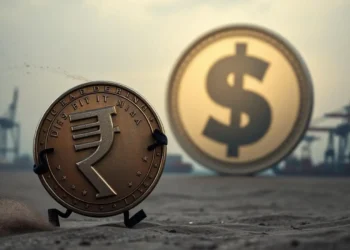India is in a better position than many competing economies and is likely to avoid stagflation as the rebound has gathered momentum, the Reserve Bank of India (RBI) said in its monthly state of the economy report.
“The recovery remained broadly on track. This demonstrates the resilience of the economy in the face of multiple shocks and the innate strength of macro fundamentals as India strives to regain a sustainable high growth trajectory,” the RBI’s research paper said.
It has also said that the recent RBI monetary policy actions to tame inflation could help grow a stable economy.
The results of the research are that of the authors from the RBI’s economic research department and do not reflect the views of the RBI itself.
The World Bank has cautioned that several economies may face stagflation — an economic condition of high inflation and fall in output – as the downside risks to global growth have accentuated with the risk of commodity price-driven inflation turning more generalised.
“In the midst of an increasingly hostile external environment, India is better placed than many other countries in terms of avoiding the risks of a potential stagflation,” RBI said.
stagflation
Global growth and inflation outlook turned grim. In its June 2022 issue of the Global Economic Prospects, the World Bank said that the combination of feeble growth and elevated inflation raises the risk of stagflation with potentially harmful consequences for low and middle-income countries.
The protracted war in Europe and ensuing sanctions kept global commodity prices elevated while denting trade and growth. In advanced economies, the war against inflation would entail significant monetary tightening, complicating the growth-inflation outlook.
Back home, with most constituents of GDP surpassing pre-pandemic levels, domestic economic activity is gaining strength. India’s March-quarter GDP growth at 4.1%, while lower than preceding quarter’s 5.4% growth, portrays a relatively better situation when several advanced and emerging economies fell into contraction. GDP grew 8.7% in FY22, surpassing the pre-pandemic (FY20) level.
RBI said that recovery remains robust in the first quarter of the fiscal despite global headwinds. The May inflation print at 7.04% brought some relief to the monetary policy maker as it recorded a decline after seven months of continuous rise. India’s consumer price index was at a high of 7.79% in April.
“Unlike the rest of the world, India is recovering and getting resilient and stronger. This is the best time to put the stabilising effects of monetary policy into action so that the costs to the economy are minimized,” RBI said.
The central bank raised policy repo rate by 90 basis points in two tranches as it shifted its focus to tame inflation from pushing growth. One basis point is 0.01%.
“Foreign investors are particularly sensitive to such monetary policy actions. They tend to see it as Indian policy authorities being resolute in their intent of protecting the value of Indian assets and so they will not pull out their investments in India and, in fact, they will invest more with the assurance of this intent to preserve macroeconomic and financial stability,” the RBI paper said. (Economic Times)














